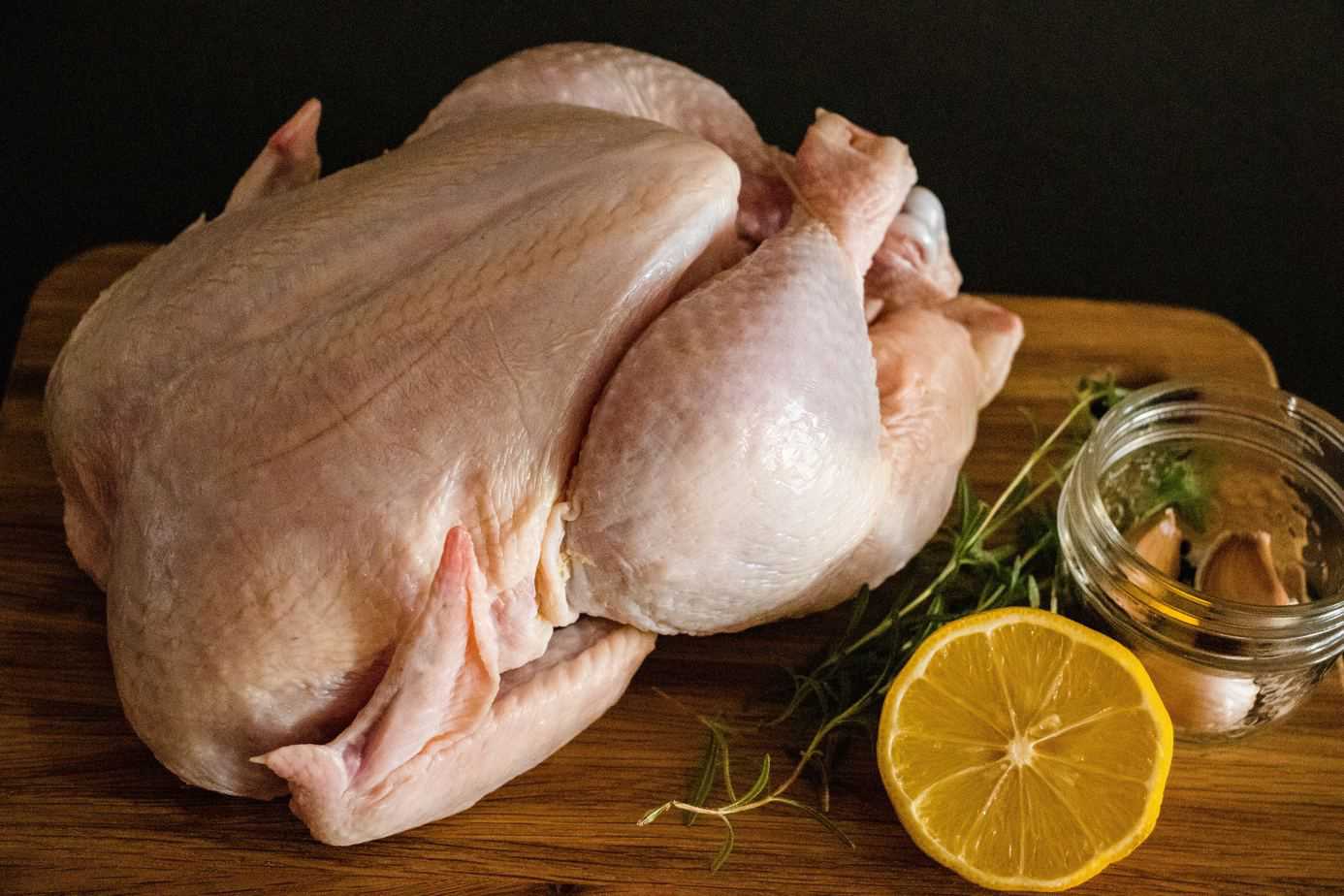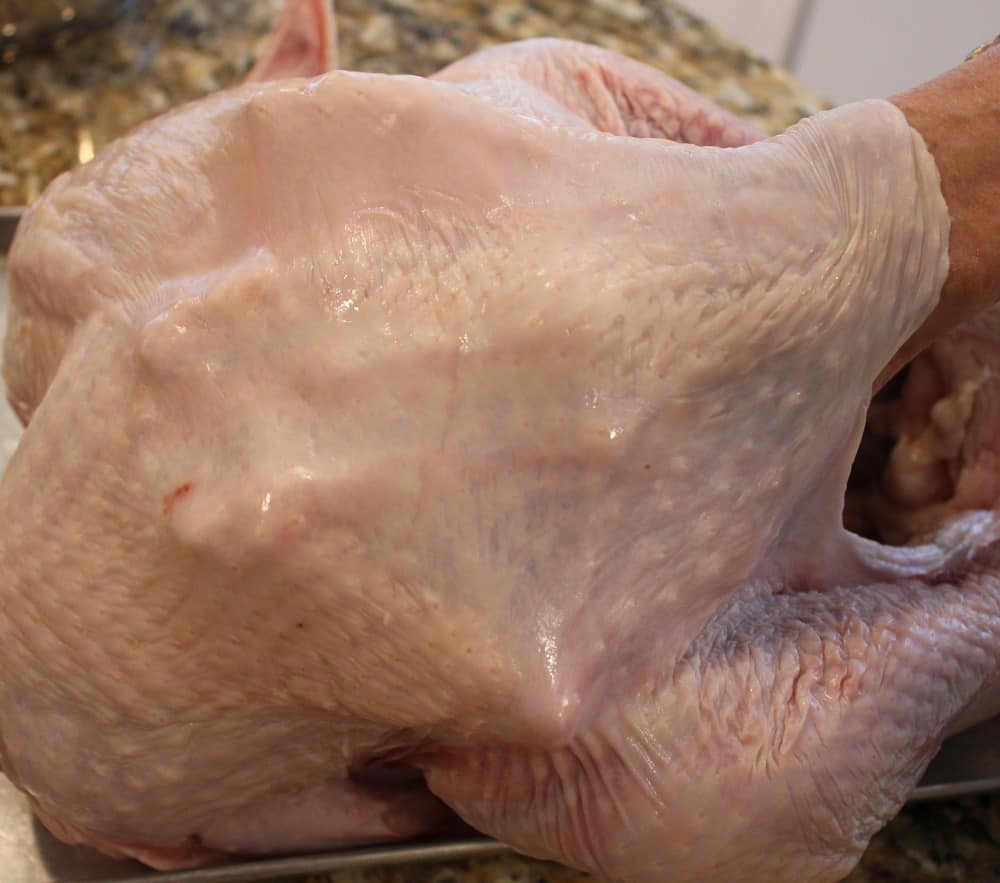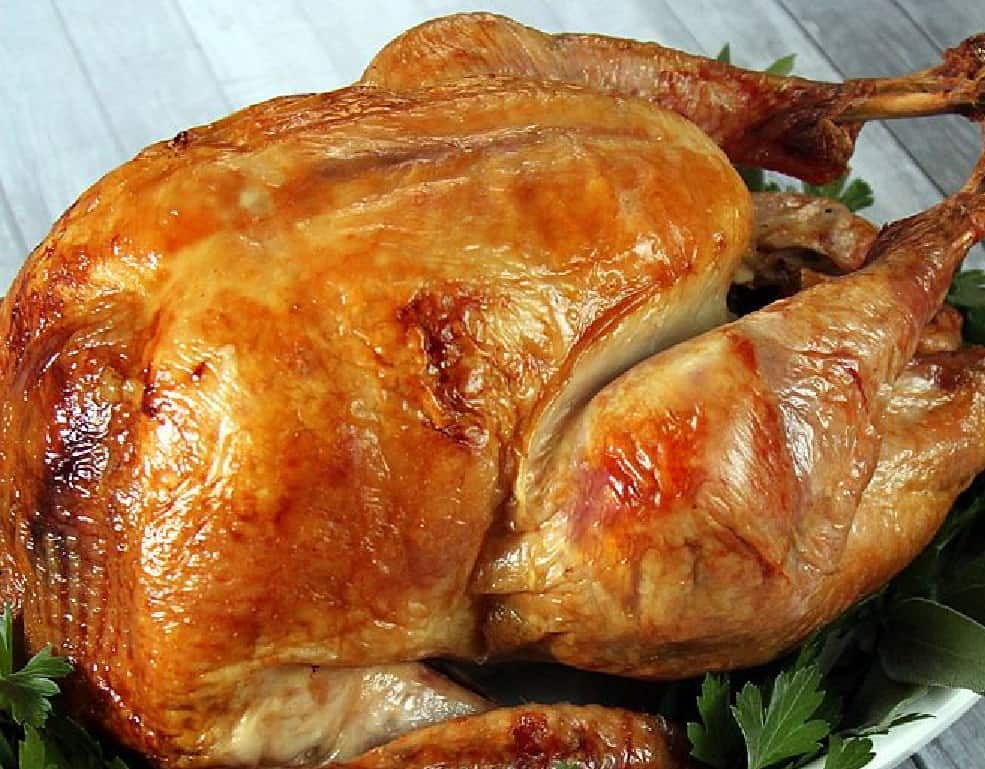How to Cook a Perfect Roast Turkey That's Never Dry!

- How to Roast Turkey:
- How to Safely Thaw a Frozen Turkey:
- How to Prepare the Turkey Before Going Into The Oven:
- Ingredients for Roasted Turkey:
- Preheat your oven to 325 degrees convection roast, or 350 degrees conventional bake.
- Turkey Cooking Instructions:
- How Long Do I Cook A Turkey In The Oven?
- IMPORTANT FOOD SAFETY TIPS:
Everyone loves the taste of a delicious oven roasted turkey. The worst thing about roast turkey has to be when it's so dry that it has less moisture than the middle of the Sahara desert. Here's my signature method of how to thaw, prepare, roast and carve, a roast turkey so that it's never dry!
How to Roast Turkey:
Preparing and cooking a turkey for dinner is never a short process. Most of the turkeys here in the United States are sold frozen and range anywhere in size from 12-30 pounds in weight.
How to Safely Thaw a Frozen Turkey:
The USDA recommends thawing your turkey in the refrigerator. This is truly the safest method because the turkey will thaw at a consistent, safe temperature. Granted, this method takes the longest amount of time, so allow one day thawing time in the fridge for each 3 - 4 pounds of weight. For example, if your turkey weighs 16 pounds, it will take around four days to thaw. Once thawed, according to the USDA, the turkey is safe for another two days, so you can start thawing it six days before thanksgiving (the Friday before Thanksgiving).
To thaw the turkey, place it in a roasting pan and put it on the bottom shelf of your refrigerator. Don't unwrap the turkey! You'll want to leave the turkey in the wrapper that you got it from the store in, this will not only protect the turkey from drying out in the fridge, but it will help contain the liquids that will run out of it as it thaws. You want to use a roasting pan so that should any of the liquids run out of the bird, they will be contained by the pan and you don't end up with a huge and horribly stinky mess in the bottom of your fridge.
How to Prepare the Turkey Before Going Into The Oven:
When the cooking day arrives, unwrap the turkey, remove the giblet pack from the turkey and set it aside. Your turkey may come with one of those awful "pop-up sensors" to tell you when the roast turkey is done. Promptly remove the pop-up button and throw it directly into the trash. Next set your turkey aside on a clean cutting board.
- Wash the roasting pan that you thawed the turkey in with hot water and plenty of soap. We don't want any bacteria!
- Do not "wash" or "rinse" your turkey. This can spread nasty bacteria all over your kitchen.
Ingredients for Roasted Turkey:
- Kosher salt
- Black pepper, freshly ground
- 2 sticks of unsalted butter, room temperature
- 1 Head of garlic
- 1 Large or 2 small lemons
- 1 Medium orange
- 2 Medium sweet onions (Vidalia, or Sweet Maui)
- Extra virgin olive oil
- 6 Dried or 4 fresh bay leaves
- 5 sprigs of fresh thyme
In a small bowl, combine 4 TBSP of kosher salt, and 1 & 1/2 TBSP of freshly ground black pepper, stir together, and set aside.
Cut the head of garlic equatorially, and remove 3 garlic cloves. In a medium bowl combine the room temperature butter, 1 & 1/4 TBSP of the salt & pepper mixture, the zest, and the juice of either the lemon or orange, (whichever you prefer). Add 1 TBSP of extra virgin olive oil, and 3 garlic cloves that you've put thru a garlic press, or minced into an ultra-fine paste. Stir together until all ingredients are combined and evenly distributed into the butter.
Season the cavity well with the salt and pepper mixture. Shove the remaining whole garlic halves into the cavity of the turkey. Slice the onions in half, leaving them unpeeled, and place them into the cavity of the turkey, along with the time sprigs and bay leaves. As these ingredients cook, they will perfume the entire roast turkey from the inside with a delicious flavor.

Preheat your oven to 325 degrees convection roast, or 350 degrees conventional bake.
With your hands, loosen the skin on the breast from both ends of the bird so that it will create a pocket, in which you will stuff the compound butter. Make sure to be gentle so that you keep the skin intact. Repeat with the skin on the legs, loosening from the lower side of the breast, and feel your way under the skin and outwards towards the leg.
Stuff a little more than half of the compound butter mixture into the pocket you just created between the skin and the breast meat. Gently massage the butter around the breasts and legs so that the meat is evenly covered with about 1/4 inch of the compound butter mixture. If you have a 20+ pound bird, you can always make a double batch of the compound butter.
If your turkey has wings that won't stay close to the body, you can either clip the wing tips off, or use a skewer to keep them in place next to the body of the turkey. You don't want your wings or legs flopping about. Think compact and tight, as this will aid in even roasting.
Place the turkey BREAST SIDE DOWN into a V-shaped roasting rack, and place it into the roasting pan. Yes, I know it sounds a little weird, but just trust me on this. With the dark meat up, take 1/2 of the remaining compound butter and rub it on the exterior of the turkey (which is the bottom side), drizzle with a little bit more extra virgin olive oil. Place the remaining butter mixture into the fridge, for now, covered in plastic wrap.
Turkey Cooking Instructions:
Place the turkey into the oven, and roast with the breast side down for the first hour. Don't forget to set a timer, because usually at my house, by this time, the first (or in my case second) bottle of wine has been opened, and sometimes we get a little "forgetful" shall we say.
After one hour, remove the turkey from the oven and invert it to the breast side up on the roasting rack, and return to the oven. Use the remaining compound butter mixture to apply to the breast skin, and brush with a little more extra virgin olive oil. Return the turkey to the oven to continue cooking.
Basting: If you are one of those people who insist that your oven-roasted turkey must be basted, baste about every 20ish minutes or so, with the natural juices that render in the bottom of the pan. To ensure even browning and cooking, rotate the pan 180 degrees in the oven every time you baste. If the pan starts to burn or dry out too much, simply add some water, wine, chicken, or vegetable stock.
Why do we cook the turkey inverted or breast-side down for the first hour? Simple, it's to give the dark meat a good head start in its cooking process prior to the breast meat. Inevitably when you oven-roast turkey the breast meat is always done well in advance of the dark meat, thusly resulting in a dry breast while you're waiting for the dark meat to come up to temperature. With the breast meat down for the first hour, the roasting pan acts somewhat like a shield, which protects the breast meat from cooking too fast.
How Long Do I Cook A Turkey In The Oven?
The answer is until it's done! You should never cook anything to time, but you should always cook it to the proper temperature. You'll want to use a reliable instant-read meat thermometer. I use the LavaTools Javelin thermometer every day in my job as a private chef. You'll want to always check the temperature of your roast turkey in two places.
Insert the thermometer into the thickest portion of the turkey breast, and the innermost portion of the thigh, making sure not to touch the bone, cartilage, or the pan. The temperature you are looking for is 150 degrees in the breast and at least 165 degrees in the thigh. The turkey will continue to carry over cook once it's out of the oven as it rests.
Before you get all freaked out that your grandmother always told you to cook the turkey to a minimum of 180 degrees. That was exactly why her turkey was dry, it was cooked to death. According to the USDA's own modern-day era data, as long as your turkey spends a minimum of 3.7 minutes at or above 150 degrees, it will be pathogenically safe. I prefer my turkey finished at about 158 degrees at the breast and 170 degrees at the thigh, as it takes the "pink" out of it, while still leaving it nice and juicy while it rests.
Once your oven-roast turkey has reached 150 degrees in the breast and at least 165 in the thigh, (a bit more thigh temp is ok) then remove it from the oven. Transfer the roasted turkey to a large platter that has sides to catch juices, and then promptly cover the turkey with heavy-duty aluminum foil for an absolute minimum of 45 but no more than 90 minutes to let it rest. Cover the foil with a clean tea towel to act as a gentle insulator / warming blanket.
IMPORTANT FOOD SAFETY TIPS:
Once your turkey has gone into the oven, discard any remaining ingredients, butter, salt & pepper, etc. that you used to prepare the raw turkey with. Wash all of your bowls and utensils up in hot soapy water, or better yet run them through the dishwasher to ensure everything is sanitary. Finally, wipe down your counters with a bleach and water solution to ensure that no remaining bacteria might be lurking.

When you're ready to carve your beautifully roast turkey, always use a sharp non-serrated carving knife. A carving knife is a long knife that has a very thin narrow blade which makes it easy work of slicing through meat. While serrated knives do a great job at getting through the crispy turkey skin straight away, then end up turning your roast turkey into ugly shreds instead of even beautiful slices.
Don't even think about using that old icky electric knife from the 1960's that you only ever drag out during the holidays either, because I know it totally crossed your mind! Always hone your carving knife on a honing steel right before you carve, that way you will always have the perfect slices!
Enjoy, please drop us a comment if you've made this recipe, and how it turned out. I'd love to hear from you!
Check out our other recipes, tips & tricks for Easy, Effortless, Entertaining from AWG Private Chefs!
- The Secret Life of Cream Cheese: Not just for bagels or cheesecake!
- Easy Homemade Marshmallow Recipe
- Winter Wine & Food Pairings
About the Author:
Certified Master Chef Sean Andrade is the executive chef/owner of AWG Private Chefs, named the #1 Private Chef company in California as well as best Caterers in San Francisco multiple years running by Expertise.com. Chef Sean has worked in the restaurant and hospitality industries worldwide for more than 25 years. His company AWG Private Chefs offers highly custom-tailored, bespoke private chef dining experiences, and private event catering in over 30 countries around the globe.
Hey very nice blog!! Guy .. Beautiful .. Amazing .. I will bookmark your site and take the feeds additionallyKI am glad to find a lot of helpful info right here within the put up, we want work out more techniques in this regard, thanks for sharing. . . . . .